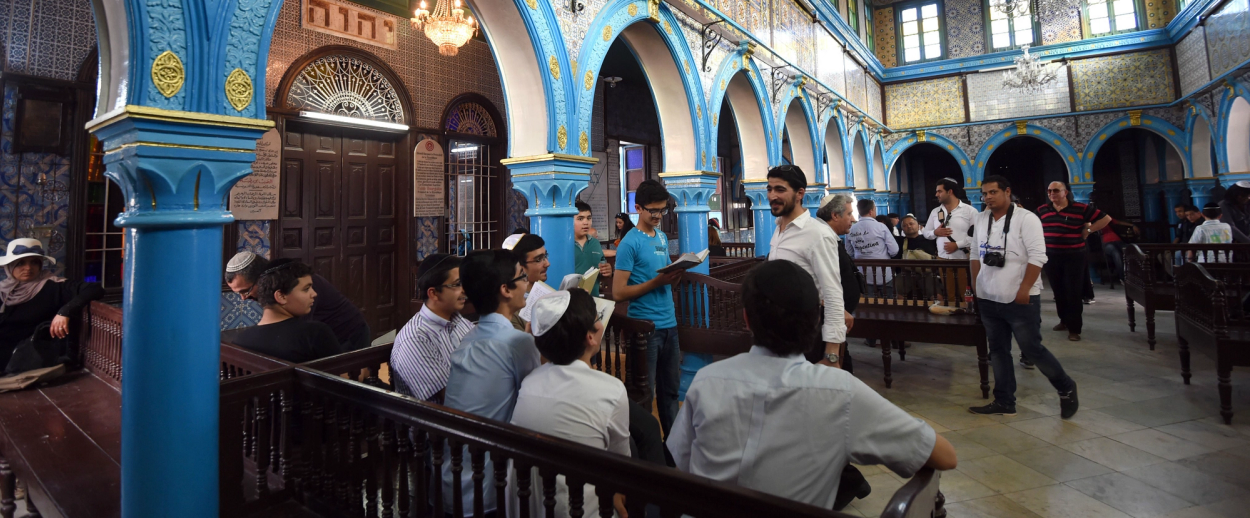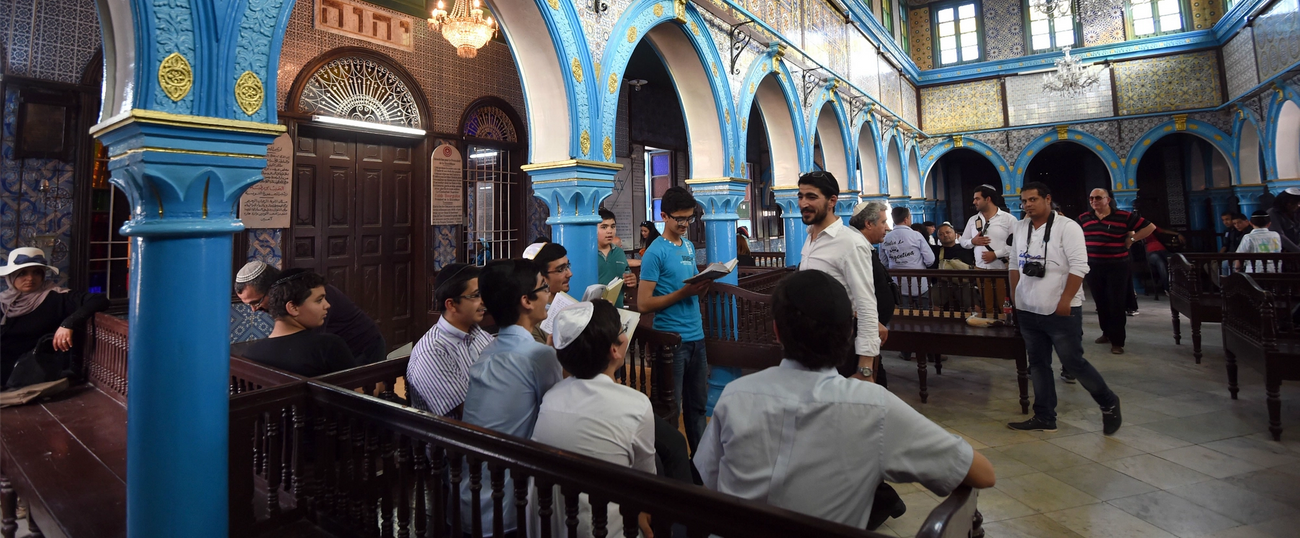The watchword of the day in activist circles is “intersectionality.” The term was coined by Kimberlé Williams Crenshaw to recognize the role that multiple identities (i.e., the intersection of race and sex) have in creating unique lived experiences for individuals. Prior to this theory, our society’s understanding of a given group’s experience of oppression was dominated by the voices of those holding power within that social group. For example, the experience of “Black women” was mistakenly conceived in terms defined by the experiences of more prominent Black men and White women. This elided the distinct oppression Black women faced within the women’s rights and civil rights movements. Intersectionality theory recognizes this phenomenon and aims to fill in these gaps, strengthening our understanding of power and privilege by giving voice to the previously voiceless.
Interrogating how intersectionality applies to the Jewish community has evoked a flurry of commentary over the past several weeks—David Bernstein and James Kirchick leveling sharp critiques, Amna Farooqi and Henry Rosen and Max Fineman rallying in passionate defense. Yet revealingly, none of these columns mention those Jews who perhaps most obviously embody the situation intersectionality was designed to tackle. As we explore what intersectionality means in the Jewish context, it is worth asking—yet again—why so many of our conversations ignore Mizrahi, Sephardic, and other non-Ashkenazi Jews.
The omission of Mizrahi and Sephardic Jews in intersectional discourse is symptomatic of a larger problem. In the global imagination, the easy conflation of “Jews” and “white” has blinded many to the internal ethnic diversity within the Jewish community—especially in Israel. Non-Ashkenazi Jews are typically ignored in public discourse or respected only insofar as they confirm the prejudices and ideologies of others. While there are some organizations, such as JIMENA (Jews Indigenous to the Middle East and North Africa), devoted to elevating the profile of Mizrahi and Sephardic Jewish concerns, in general American Jewish organizations right, left, and center are notorious for being Ashke-normative—in other words, making the Ashkenazi experience the de-facto Jewish experience. This is similarly the case among critics of the American Jewish establishment, both Jewish and not.
Mizrahi Jews represent a conundrum for Jews and non-Jews alike accustomed to the typical Eurocentric modes of characterization. “Jews living in the Middle East? North Africa? Jews identifying as Jewish and Arab? Jews having Arab names and speaking Arabic?” Yet for more than 2000 years, Jews lived among Arabs, spoke their language, and shared many of their customs. These Jews were responsible for contributing the Babylonian Talmud, and centuries later were crucial in revolutionizing the economies of cities including Aleppo, Baghdad, and Cairo.
Unfortunately, Ashkenazi history and culture primarily dominates Jewish dialogue and experiential learning, and Jews are erroneously being uniformly labeled “white” as a result of it. It’s Yiddish—not Ladino or Arabic—that Jews and non-Jews incorporate into their daily vocabulary. It’s the Holocaust—not the expulsion and exodus of nearly one million Jews from the Middle East, North Africa, and Iran—that students learn about in schools. And it’s kugel and gefilte fish—not kubbeh and borekas—that are served at community events and celebrations. This lack of knowledge becomes even more troubling when one considers that included in those unaware of this history are Jews that grew up in a Jewish home, attended synagogue, and received some form of Jewish education.
Israel, a country which (despite anti-Zionist erasures seeking to portray it as a colonial White imposition) possesses a Mizrahi Jewish plurality, is similarly battling this information and representation gap. On June 23, 2014 the Government of Israel adopted a law to designate November 30 as the annual national Day of Commemoration for the 850,000 Jewish refugees who were displaced from Arab countries and Iran in the 20th century. The law, which is the culmination of several years of hard work and dedication by an international team of Mizrahi Justice advocates, legislates commemoration events and the inclusion of Mizrahi history into the Israeli school curriculum. Since the passing of this law over 200 commemoration events have been held around the world. Despite the increased visibility of Mizrahi and Sephardic communities, we can do better. As it stands today, Ashkenazim continue to be overrepresented in elite positions, and political and social life is consequently skewed towards their priorities. As we move forward in interrupting this form of historical and cultural oppression, we must remember the power of intersectionality.
An intersectional lens illuminates how issues important to Mizrahi and Sephardic Jews are routinely marginalized and suppressed. For example, Lara Friedman of Americans for Peace Now (APN) has attacked congressional endeavors to promote compensation for Mizrahi and Sephardic Jews forced to flee from Arab countries, complaining that they undermine the peace process. A good intersectional theorist should immediately identify the problem: like many groups, APN envisions peace negotiations which satisfy the demands of (European) Jews and (non-Jewish) Middle Easterners. But Middle Eastern Jews are left out; their specific concerns tabled indefinitely. In effect, Friedman writes out the particular experiences of Mizrahi and Sephardic Jews from general, “neutral” efforts at achieving a just peace—an exclusion that is particularly galling given the favorable attention paid to proposals such as the Arab Peace Plan which purport to resolve the conflict on a comprehensive, region-wide basis.
To be sure, Ms. Friedman claims to support recompense for Jewish refugees, objecting only to the manner in which the goal is pursued (though it is notable that, aside from this flat declaration, we are aware of no significant efforts by APN or Ms. Friedman to press this issue in a more “acceptable” manner). But if Ms. Friedman is worried about Mizrahi and Sephardic Jews being “exploited” by conservative Israeli forces, there is a simple solution: empower these communities to speak with their own voice and take control of their own stories.
Such an endeavor, of course, risks the possibility that these Jews will make claims or issue demands that are difficult to hear or which don’t mesh with prevailing narratives. When asked to speak at certain Zionist functions, many Jewish refugees from the Middle East and North Africa are asked to focus on the mistreatment they experienced under Arab rule—not the ways in which they successfully coexisted with Muslims, or the serious discrimination they have faced in Israeli society after arriving in the Promised Land. In anti-Zionist circles the situation inverts: the hosts are delighted to hear tales of Israeli malfeasance but are deeply hostile if the topic turns to the oppression and expulsion of Jews from Arab countries or if the Jews proclaim a proud connection to Israel. Either way, non-Ashkenazi Jews are engaged with only as far as they support someone else’s narrative. Once they seek to speak in their own voice, their putative allies disappear.
‘Most non-Ashkenazi Jews in the world live in Israel, and so a boycott of Israel functionally acts to exclude most Jews of color from global conversations.’
Even as it attempts to cloak itself in intersectional garb, the BDS movement in particular faces a serious challenge if Mizrahi and Sephardic Jews are recognized as having a voice demanding respect. The BDS movement exploits the predominantly Ashkenazi character of the North American Jewish community to elide the fact that most non-Ashkenazi Jews in the world live in Israel, and so a boycott of Israel functionally acts to exclude most Jews of color from global conversations. Consequently, when groups like Jewish Voice for Peace (whose statement this month on intersectionality unsurprisingly ignored Mizrahi and Sephardic Jews entirely) attempt to put a Jewish patina on BDS, they are in effect saying that the only Jews worth listening to are the White ones. In this respect, the critics of intersectionality have it backwards: it is the failure to engage in a truly inclusive intersectional analysis that allows many purportedly progressive organizations to facilitate the continued marginalization of Mizrahi and Sephardic Jews.
Mizrahi, Sephardic, and other non-Ashkenazi Jews have stories and demands which pose a challenge to Jewish and non-Jewish groups of any political persuasion. But the obligation to be intersectional does not end when a marginalized group ceases to say what one wants to hear. Taking non-European Jews seriously means taking them seriously on their own terms. This basic principle of justice is one in which both the non-Jewish and Ashkenazi Jewish communities have often failed to uphold. They, and we, need to do better.

